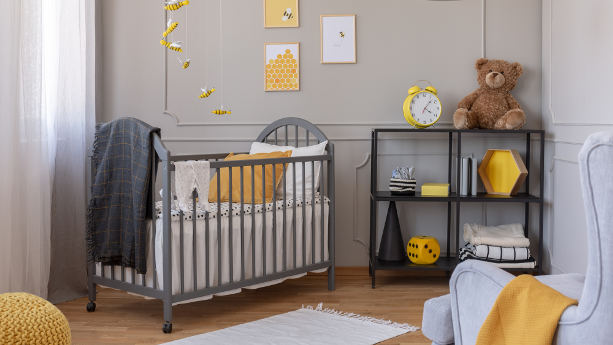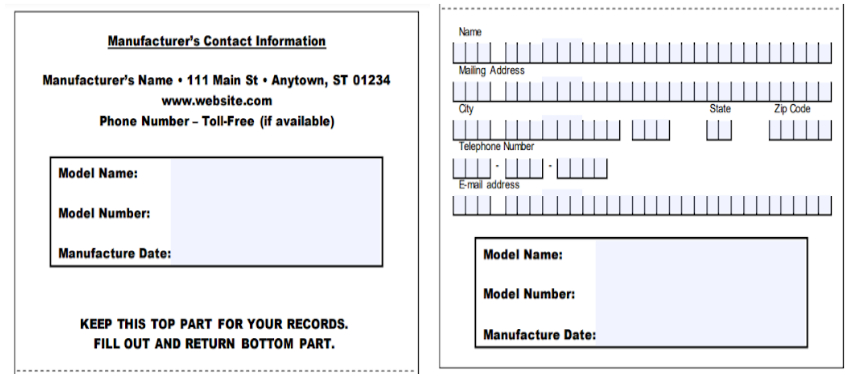All children’s products manufactured or imported in the US are covered by the CPSIA. However, additional requirements apply to certain types of children’s furniture, baby walkers, play yards, and other products classified as durable infant and toddler products.
In this guide, we explain what these additional requirements are, and how this impacts importers and Amazon sellers in particular.
Content Overview

FREE CONSULTATION CALL (US, EU & UK)
- Request a free 30-minute call with Ivan Malloci to learn how we can help you with:
- Find product requirements
- Certification and labeling
- Lab testing
CPSIA Requirements Summary
The Consumer Product Safety Improvement Act (CPSIA) applies to all children’s products sold in the United. Additional requirements apply to products classified as durable infant and toddler products. However, all other standard CPSIA requirements also apply.
Here’s a brief summary:
Lab testing
Third-party lab testing, ensuring compliance with applicable substance bans and ASTM standards, is mandatory for all children’s products. Further, only test reports issued by a CPSC accepted company are valid.
Children’s Product Certificate (CPC)
Manufacturers and importers must issue a Children’s Product Certificate, which in turn requires a lab test report. Here’s an overview of the information you need in order to complete the CPC:
1. Product name and description
2. List of applied and mandatory ASTM and CPSC standards (e.g ASTM F963)
3. Importer information (US company name, US address, e-mail, phone)
4. Contact information of the person with access to the test report (name, address, e-mail, phone)
5. Manufacturing location (city, province, country) and date (month, year)
6. Testing date (month, year) and location (city, province, country)
7. CPSC accepted third-party lab testing company (company, contact person, address, phone, e-mail)
Tracking Label
The product and the packaging must carry a tracking label. This information is generally included:
1. Domestic manufacturer or importer
2. Production location (e.g. city, state, or province) and date
3. Batch number
4. Relevant information about the product and materials
Warning labels
Products for certain age groups also require warning labels. You can read this article to learn more about small parts warnings.

Additional Requirements for Durable Infant or Toddler Products
Additional requirements apply to products classified as durable infant or toddler products. Below follows a summary of some requirements.
Product Registration Card
A printed product registration card must be provided in the product packaging to the consumer. The consumer can then choose to fill out the card and return it back to your address. Notice that the card must be postage-paid to a US address. Postage-paid means that the sender (e.g. the seller) has already pre-paid the return cost.
The purpose of the card is to speed up product recalls, in case safety issues would be found at some point.
Consumer Registration Record
The seller must maintain a record of consumers that return the cards, in order to ensure that consumers can be quickly tracked down in case of a recall. Sellers must keep track of this information:
- Name
- Address
- Phone
- Product name/SKU
Labeling Requirements
The seller must also include US contact information on the tracking label:
- US address
- US phone number
This table on the CPSC website also clarifies the tracking label requirements on the packaging and the product.
Product Safety Standards
Product-specific ASTM standards apply to certain types of durable infant and toddler products. These generally cover structural and mechanical safety aspects of products, such as baby cribs and infant swings. Our recommendation is to always ask a CPSC accepted testing company to help you assess applicable ASTM standards for your products.
Examples Durable Infant or Toddler Products
The CPSC publishes a list of durable infant and toddler products on its website. Here are some products included in the list:
- Cradles
- Cribs
- High chairs
- baby carriers
- Baby tubs
- Baby swings
- Baby walkers
- Infant beds
- Play yards
You can find the complete list here.
Product Registration Card Information
Here’s an overview of the information you need to include in your product registration card.
Manufacturer or importer
The company name of the manufacturer or importer must be included. Our understanding is that this should be a US manufacturer or importer.
Manufacturing date
The manufacturing date of the product must be specified. This information can help you track down unsafe and defective products to a specific batch.
Manufacturing location
The manufacturing location of the product must be specified. This is often done in this format:
City, Region/Province, Country
This information can help you track down unsafe and defective products to a specific production facility or even a production line.
Product name/Model/SKU
The product name and model number/SKU must be included in the registration card.
US contact details: Address and phone number
The CPSC also requires that you specify a US address and phone number.
Consumer Fields
The purpose of the registration card is to allow your consumers to fill out their details and return the card back to the seller. This is generally included:
- Name
- Address
- City
- State
- Zipcode
- Phone number
Product Registration Card Example
Source: FR notice for final rule amending consumer registration rule (Link)
FAQ
How do I get postage-paid cards?
USPS and other companies offer postage pre-paid envelopes. You can find one example here.
Can I get the registration card printed by the manufacturer?
Yes, as most manufacturers have local subcontractors for print materials. For example, the registration cards can be printed in China and Vietnam. The challenge here I imagine is the postage pre-paid envelopes must be sent to the supplier.
The alternative is to both print the registration cards in the US and then place the cards in the postage pre-paid envelopes.
Do these requirements also apply to Amazon sellers?
Amazon sellers must comply with all CPSIA requirements, just like all other sellers. Amazon is strict when it comes to checking test reports and other compliance documents. This also applies to companies based overseas.


















We are interested in the CPSIA, about the registration card part. We have our own manufacturer and company in China. Meanwhile, we have a return address in the US. Now, there are 3 products which are ready to show up. Baby carrier, bassinet and high chair. There are 3 things that we want to know.
(1) What kind of CPSIA registration card information do you need?
(2) Can the three products share one CPSIA?
(3) All registrations of our products are completed in China. Will this have an influence on my certification of CPSIA? If it will, how can I solve it?